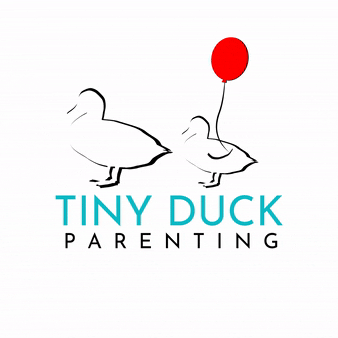Mastering toddler sleep training is a journey many parents embark on with a mix of hope and hesitation. At Tiny Duck Parenting, we understand the struggles of bedtime battles, midnight wake-ups, and the constant challenge of getting our little ones to stay in bed all night.
In this blog post, we’ll explore a popular toddler sleep training method known as the Chair Method, and compare it to our preferred approach – the Week to Sleep method. We recognize that every child is unique, and what works for one may not work for another. The Chair Method involves gradually moving a chair out of the child’s room each night until they can fall asleep independently. While this method has seen success, it does pose challenges, such as potentially prolonged bedtime routines and potential confusion for the child.
Our Week to Sleep method, on the other hand, emphasizes a consistent and structured approach. It involves setting clear expectations, adjusting bedtime routines, and addressing any specific sleep issues your child may face. This method aims to create a supportive sleep environment, promoting self-soothing skills and a smoother transition to independent sleep.
Throughout this blog post, we’ll delve into the intricacies of the Chair Method, its challenges, and why we believe our Week to Sleep method offers a more seamless transition for toddlers, taking into account individual needs and providing a customizable approach to better meet the unique challenges of sleep training.
The Chair Method: A Brief Overview
The Chair Method is a widely recognized sleep training technique parents use to help their toddlers develop a consistent sleep routine. The concept involves placing a chair next to the toddler’s bed during bedtime. As the child falls asleep, the parent gradually moves the chair further away, night after night, until it’s eventually outside the room.
While this method has been successful for families, it does come with its set of challenges. The gradual progression of moving the chair may extend bedtime routines, potentially leading to prolonged settling periods. Additionally, some children may find this approach confusing, mainly if they rely on the parent’s presence to fall asleep. It’s crucial for parents to gauge their child’s reaction and adapt the method according to individual needs, understanding that the transition to independent sleep varies for each toddler.
Challenges of the Chair Method
While the Chair Method can be effective for some families, it comes with its set of challenges. Toddlers, known for their strong wills, may resist the process. The constant threat of the parent leaving the room can create bedtime battles, making it difficult for the child to choose to stay in bed.
Also, middle-of-the-night wake-ups might become prolonged as the child associates the chair’s presence with falling asleep. Until your child falls asleep easily at bedtime with the chair completely out of sight, the middle of the night wake-ups will continue; with this method, you see results slowly, which can be frustrating and exhausting for all.

Our Preferred Approach: The Week to Sleep Method
We recognize that the Chair Method works for some families, but we suggest giving the Week to Sleep a try first. Unlike the Chair Method, our approach minimizes the challenges associated with bedtime battles and midnight wake-ups.
Here’s why we believe our method stands out:
The Week to Sleep method prioritizes consistency in routines, creating a structured environment that helps toddlers understand and anticipate bedtime expectations.
Introducing changes over the course of a week allows both parents and toddlers to adapt more smoothly to the new sleep patterns. This method also focuses on addressing specific sleep issues, tailoring the approach to the unique needs of each child. Our goal is to offer a customizable and effective solution, reducing the stress associated with sleep training while fostering a positive sleep experience for both parents and toddlers alike.
Empowering Toddlers to Stay in Bed All Night
Our Week to Sleep method focuses on teaching your toddler from night 1 to fall asleep independently. You will teach your toddler to stay in bed throughout the night without the need for constant threats or disruptions. By incorporating consistent responses, games, and positive reinforcement strategies, such as sticker charts, and celebrating success, we create a more encouraging environment for your child.
Seamless Bedtime Routine
With the Week to Sleep method, we guide parents through a step-by-step bedtime routine that ensures a smooth transition from playtime to dinner time to sleep. This not only helps the child fall asleep but also establishes a consistent pattern that can be sustained over the long term.
By breaking down the evening routine into manageable steps, we aim to create a positive association with bedtime, minimizing resistance and promoting a sense of security for toddlers. The gradual introduction of changes over the course of a week allows both parents and children to adapt at their own pace, fostering a more enjoyable and less stressful bedtime experience. Our method is designed to be flexible and adaptable to the unique needs of each family, recognizing that every child is different and requires a personalized approach to ensure a successful and peaceful sleep transition.
No Need for Threats or Leaving the Room
Unlike the Chair Method, our approach eliminates the need for parents to threaten to leave the room, creating a more relaxed atmosphere for both parent and child. In fact, you will be side by side with your child for most of the process!
Our emphasis on maintaining proximity and offering a reassuring presence during bedtime helps build a sense of security for toddlers. The Week to Sleep method encourages positive interaction between parent and child, fostering a connection that supports a smoother transition to sleep.
By staying close and engaged, parents can better respond to any concerns or anxieties that may arise, addressing them in real-time and reinforcing a comforting sleep environment. This hands-on approach distinguishes our method, creating a supportive bedtime routine that minimizes stress and enhances the overall sleep experience for both parents and toddlers.
Addressing Midnight Wake-Ups Efficiently
Our method includes strategies to handle middle-of-the-night wake-ups effectively. By establishing clear expectations and incorporating age-appropriate techniques, we aim to minimize disruptions and ensure your child returns to sleep promptly.
Recognizing that night awakenings are a common aspect of toddler sleep training; our approach equips parents with the tools to respond calmly and consistently. We guide you through gentle methods that reassure your child during these wake-ups, promoting self-soothing skills and reducing dependency on external factors for falling back asleep.
This comprehensive approach not only addresses the immediate concerns of night wake-ups but also contributes to the development of sustainable sleep habits, promoting a more restful and rejuvenating sleep for both your toddler and you as parents.
Personalized Solutions for Every Child
We understand that every child is unique, and what works for one may not work for another. Our Week to Sleep method flexibly tailors to the individual needs and temperament of your toddler.
You can even add-on a coaching call with our sleep strategist, Jennie Boone! This personalized touch ensures that our method aligns seamlessly with your child’s specific sleep challenges and your family’s lifestyle. Jennie’s expertise provides additional guidance and support, addressing any concerns and offering insights to optimize the success of the Week to Sleep method.
In the realm of toddler sleep training, the Chair Method has its merits, but at Tiny Duck Parenting, we believe in providing parents with a more seamless alternative and giving your toddler the chance to succeed starting night 1.
Our Week to Sleep method offers a child-centric approach that prioritizes positive reinforcement, consistency, and a stress-free bedtime routine. Say goodbye to bedtime battles and midnight wake-ups – embrace a restful night’s sleep for both you and your toddler. The focus on a child-centric approach ensures that your toddler’s unique needs are at the forefront of the sleep training process, fostering a positive and enduring transition to independent sleep.





